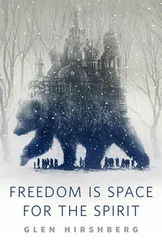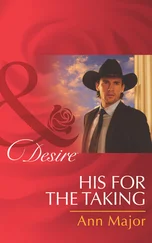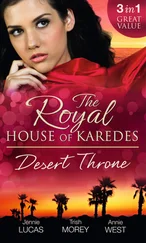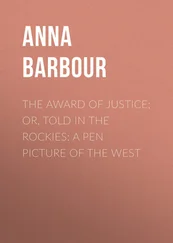Moslems worshipped in a body, prostrating themselves on the floor of the mosque in the direction of Mecca, chanting in unison their Koranic verses. A Hindu worshipped alone with only his thoughts linking him and the God he could select from a bewildering pantheon of three to three and a half million divinities. It was a jungle so complex that only a handful of humans who’d devoted their lives to its study could find their way through it. At its core was a central trinity: Brahma, the Creator; Shiva, the Destroyer; Vishnu, the Preserver – positive, negative, neutral forces, eternally in search, as their worshippers were supposed to be, of the perfect equilibrium, the attainment of the Absolute. Behind them were Gods and Goddesses for the seasons, the weather, the crops, and the ailments of man, like Maryamma, the smallpox Goddess revered each year in a ritual strikingly similar to the Jewish Passover.
The greatest barrier to Hindu-Moslem understanding, however, was not metaphysical, but social. It was the system which ordered Hindu society, caste. According to Vedic scripture, caste originated with Brahma, the Creator. Brahmins, the highest caste, sprang from his mouth; Kashtriayas, warriors and rulers, from his biceps; Vaishyas, traders and businessmen, from his thigh; Sudras, artisans and craftsmen, from his feet. Below them, were the outcasts, the Untouchables who had not sprung from divine soil.
The origins of the caste system, however, were notably less divine than those suggested by the Vedas. It had been a scheme employed by Hinduism’s Aryan founders to perpetuate the enslavement of India’s dark, Dravidian populations. The word for caste, varda , meant colour, and centuries later, the dark skins of India’s Untouchables gave graphic proof of the system’s real origins.
The five original divisions had multiplied like cancer cells into almost 5000 sub-castes, 1886 for the Brahmins alone. Every occupation had its caste, splitting society into a myriad of closed guilds into which a man was condemned by his birth to work, live, marry and die. So precise were their definitions that an iron smelter was in a different caste to an ironsmith.
Linked to the caste system was the second concept basic to Hinduism, reincarnation. A Hindu believed his body was just a temporary garment for his soul. Each life was only one of his soul’s many incarnations in its journey through eternity, a chain beginning and ending in some nebulous merger with the cosmos. The Karma , the accumulated good and evil of each mortal lifetime, was a soul’s continuing burden. It determined whether, in its next incarnation, that soul would move up or down in the hierarchy of caste. Caste had been a superb device to perpetuate India’s social inequities by giving them divine sanction. As the Church had counselled the peasants of the Middle Ages to forget the misery of their lives in the contemplation of the hereafter, so Hinduism had for centuries counselled the miserable of India to accept their lot in humble resignation as the best assurance of a better destiny in their next incarnation.
To the Moslems to whom Islam was a kind of brotherhood of the Faithful, that whole system was anathema. A generous, welcoming faith, Islam’s fraternal embrace drew millions of converts to the mosques of India’s Moghul rulers. Inevitably, the vast majority of them were Untouchables, seeking in the brotherhood of Islam an acceptance their own faith could offer them only in some distant incarnation.
With the collapse of the Moghul Empire at the beginning of the eighteenth century, a martial Hindu renaissance spread across India, bringing with it a wave of Hindu-Moslem bloodshed. Britain’s conquering presence had forced its Pax Britannica on the warring sub-continent, but the mistrust and suspicion in which the two communities dwelt remained. The Hindus did not forget that the mass of Moslems were the descendants of Untouchables who’d fled Hinduism to escape their misery. Caste Hindus would not touch food in the presence of a Moslem. A Moslem entering a Hindu kitchen would pollute it. The touch of a Moslem’s hand could send a Brahmin shrieking off to purify himself with hours of ritual ablutions.
Hindus and Moslems shared the villages awaiting Gandhi’s visit in Noakhali, just as they shared the thousands of villages all through the northern tier of India in Bihar, the United Provinces, the Punjab. They dwelt, however, in geographically distinct neighbourhoods. The frontier was a road or path, frequently called the Middle Way. No Moslem would live on one side of it, no Hindu on the other.
The two communities mixed socially, attending each other’s feasts, sharing the poor implements with which they worked. Their intermingling tended to end there. Intermarriage was almost unknown. The communities drew their water from separate wells and a caste Hindu would choke before sipping water from the Moslem well perhaps yards from his own. In the Punjab, what few scraps of knowledge Hindu children acquired came from the village Pandit who taught them to write a few words in Punjabi in mud with wheat stalks. The same village’s Moslem children would get their bare education from a sheikh in the mosque reciting the Koran in a different language, Urdu. Even the primitive drugs of cow’s urine and herbs with which they struggled against the same diseases, were based on different systems of natural medicine.
To those social and religious differences, had been added an even more divisive, more insidious distinction, economic. The Hindus had been far swifter than the Moslems to seize the opportunities British education and Western thought had placed before India. As a result, while the British had been socially more at ease with the Moslems, it was the Hindus who had administered India for them. * They were India’s businessmen, financiers, administrators, professional men. With the Parsees, the descendants of ancient Persia’s fire-worshipping Zoroastrians, they monopolized insurance, banking, big business and India’s few industries.
In the towns and small cities, the Hindus were the dominant commercial community. The ubiquitous role of the moneylender was almost everywhere discharged by Hindus, partly because of their aptitude for the task, partly because of the Koranic proscription preventing Moslems from practising usury.
The Moslem upper classes, many of whom descended from the Moghul invaders, had tended to remain landlords and soldiers. The Moslem masses, because of the deeply engrained patterns of Indian society, rarely escaped in the faith of Mohammed the roles that caste had assigned their forebears in the faith of Shiva. They were usually landless peasants in the service of Hindus or Moslems in the country, labourers and petty craftsmen in the service of Hindu employers in the city.
That economic rivalry accentuated the social and religious barriers between the two communities and made communal slaughters such as that which had shattered the peace of Srirampur a regular occurrence. Each community had its pet provocations with which it would launch them.
For the Hindus it was music. Music never accompanied the austere service of the mosque and its strains mingling with the mumble of the Faithfuls’ prayers was a blasphemy. There was no surer way for the Hindus to incite their Moslem neighbours than to set up a band outside a mosque during Friday prayers.
For the Moslem, the favourite provocation involved an animal, one of the grey, skeletal beasts lowing down the streets of every city, town and village in India, aimlessly wandering her fields, the object of the most perplexing of Hinduism’s cults, the Sacred Cow.
The veneration of the cow dated back to biblical times, when the fortunes of the pastoral Indo-European peoples migrating on to the sub-continent depended on the vitality of their herds. As the rabbis of ancient Judea had forbidden pigs’ flesh to their people to save them from the ravages of trichinosis, so the sadhus of ancient India proclaimed the cow sacred so as to save from slaughter in times of famine the herds on which their peoples’ existence depended.
Читать дальше












